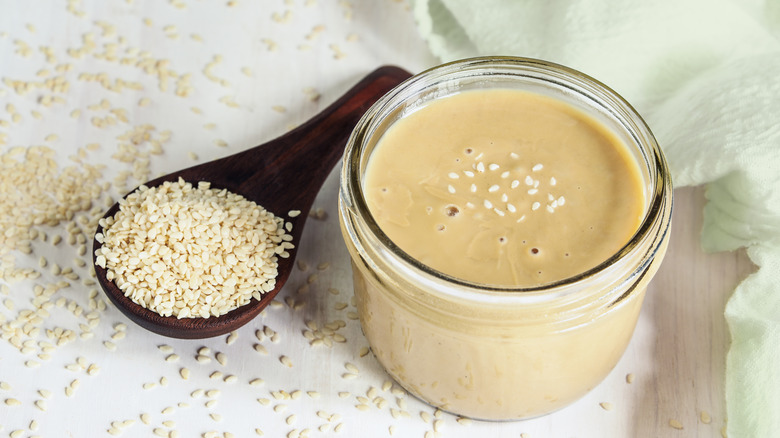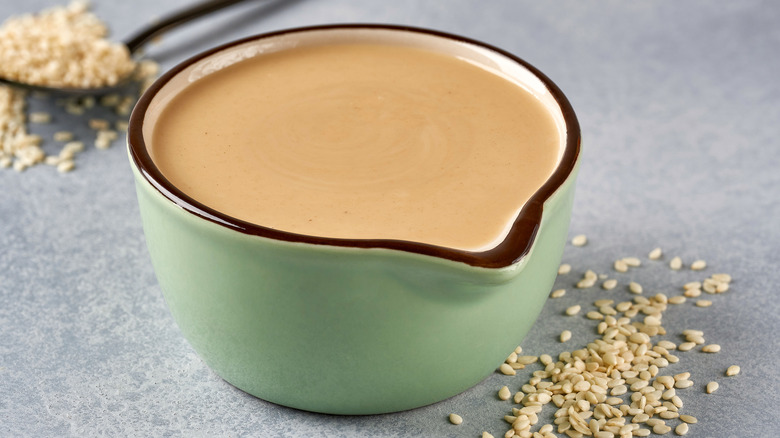How Long An Open Jar Of Tahini Will Stay Good
A paste made from finely ground sesame seeds, tahini is a rich, creamy Mediterranean and Middle Eastern condiment that can be used in a plethora of ways, from being incorporated into dressings and sauces to dips and desserts. But even with its high versatility and numerous health benefits, it remains an underrated ingredient in Western cultures overall. It's not hard to imagine that a jar of the stuff sits around untouched in people's fridges with only a small portion put to use. So if your tahini is only utilized here and there for a recipe or two, that begs the question of how long the rest will stay good.
Luckily, even once the condiment's jar has been opened, you still have a good six months to use it up until it'll likely go bad. It's better to consume it within one to two months of opening the container, though, as the product's quality may diminish past this initial timespan. In other words, don't wait around to add tahini into whatever recipes you can, whether it's used as a swap for mayo in coleslaw or drizzled atop an herbed potato salad. You'll be looking at some unfortunate signs of spoilage otherwise.
Signs your tahini has gone bad
It's not difficult to sense when your tahini has gone bad, as any change in its original appearance, smell, flavor, or quality is a clear indicator. It's not advisable, but you could always do a taste test if you're willing to risk the consumption of bacteria. Just don't confuse tahini's naturally bitter, savory notes for spoilage. You'll know the condiment has gone bad if it tastes sharp or sour. However, before you can even consider eating it, an off-putting odor would probably hit you first. Bad tahini will smell pungently rancid.
Any visible mold growth is a dead giveaway that your sauce or paste should be disposed of. Another visual sign of spoilage is separation. Similar to peanut butter, it's not uncommon for the oils in tahini to naturally rise to the top of the container. It should be easy to fix this separation with a good shake of the jar, but if the solid and liquid won't seem to come back together, that's yet another cue to toss the product out. The same goes for tahini that has hardened or dried out.
How to make your tahini last longer
The shelf life of tahini can be extended so long as you take the proper precautions. Whether your jar lasts a few weeks or a few months after being opened largely depends on how you store it. As a guideline, this condiment can be treated very much like peanut butter. It's best to keep your product in an airtight container with the lid sealed as tightly as possible. Placing it in a cool, dark place away from moisture and heat will do best.
This means both the refrigerator and pantry are viable options. The pantry or even a closed cabinet will allow your tahini to retain its original consistency, keeping it smooth, creamy, and ready for immediate use. But just as there's a strong case for why peanut butter should be refrigerated, some will choose to keep their tahini there for similar reasons. One rationale is that it may slow the process of oil separation. This cold environment comes with a caveat, though. It'll change your tahini's velvety, easy-to-pour texture and instead leave it with a thickened consistency, making it act as more of a spread. Last, you can even freeze tahini in small portions and defrost however much you need right before use. Any of these storage locations will be just fine for your tahini; it all comes down to the consistency you want the condiment to be.


